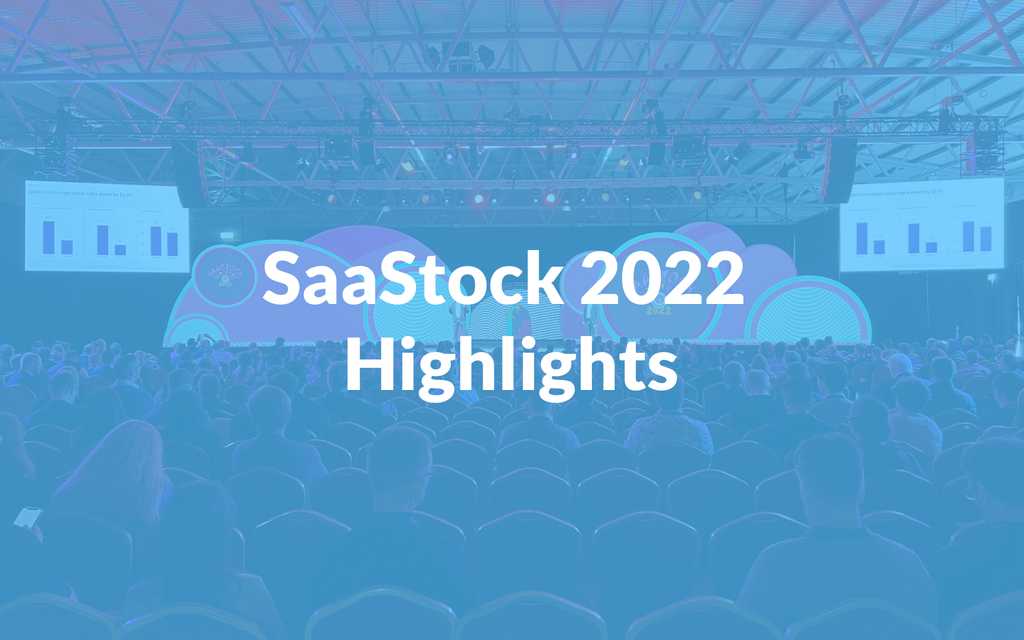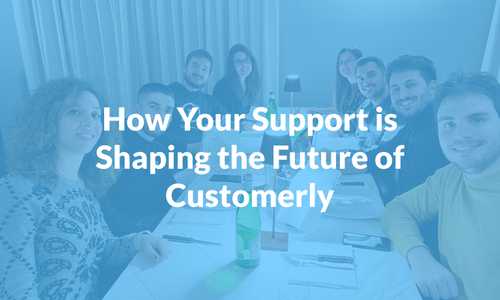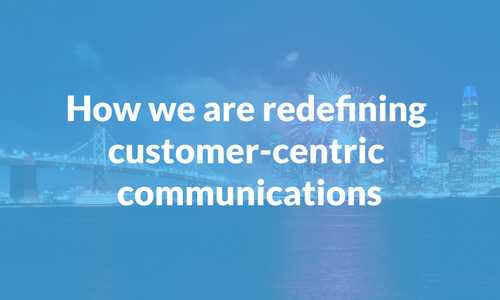Since there aren’t SaaStock recordings, I wanted to share with you some highlights of one of the top SaaS events in the world from a B2B Bootstrapped SaaS founder perspective.
The amount of learning is incredible, and I’ll try to keep this article as juicy as possible.

As we are a bootstrapped B2B SaaS, I was mainly attending Bootstrappers, Growth and Accelerate talks.
Let’s start with Growth, shall we?
Content is still king.
Since CAC is skyrocketing, bootstrapped and enterprise companies are finding ways to lower their CAC.
How?
By creating content to attract, convert and expand their customer base.
Here is an example from Minuttia on how to get from 0 to 100K monthly organic visits.
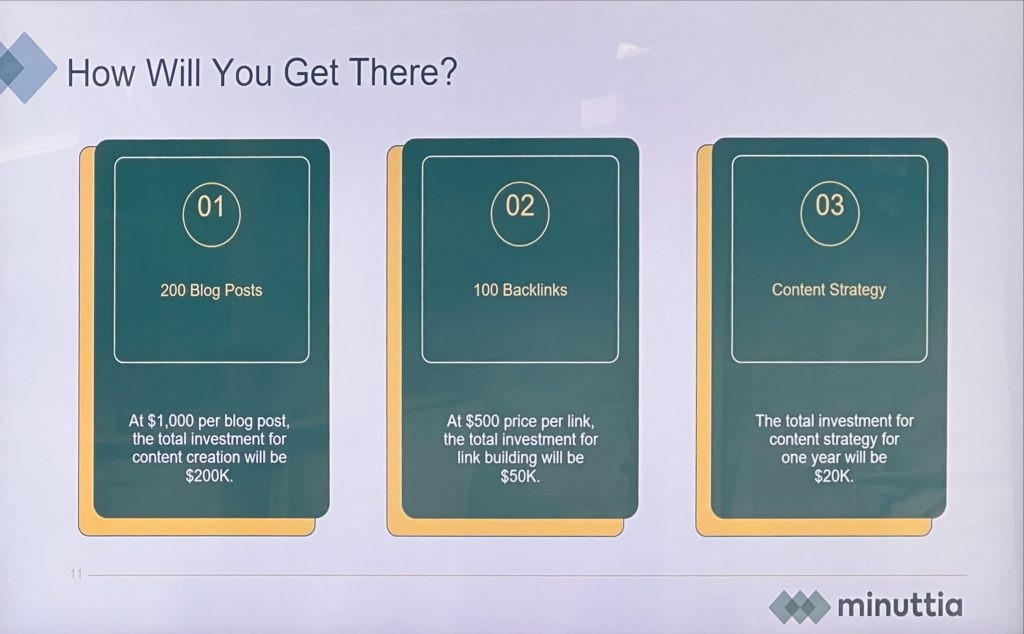
Creating content for B2B SaaS is getting expensive at around $1000 per article, backlinks with an average price of $500 and designer costs involved.
How do you calculate ROI on your content marketing strategies?
This is their ROI forecast for a strategy to create 200 blog posts to get to 100K MRR in 12 months. Considering a View-to-lead conversion rate of 2% and a lead-to-customer rate of 5%. Your average LTV is $1,000.
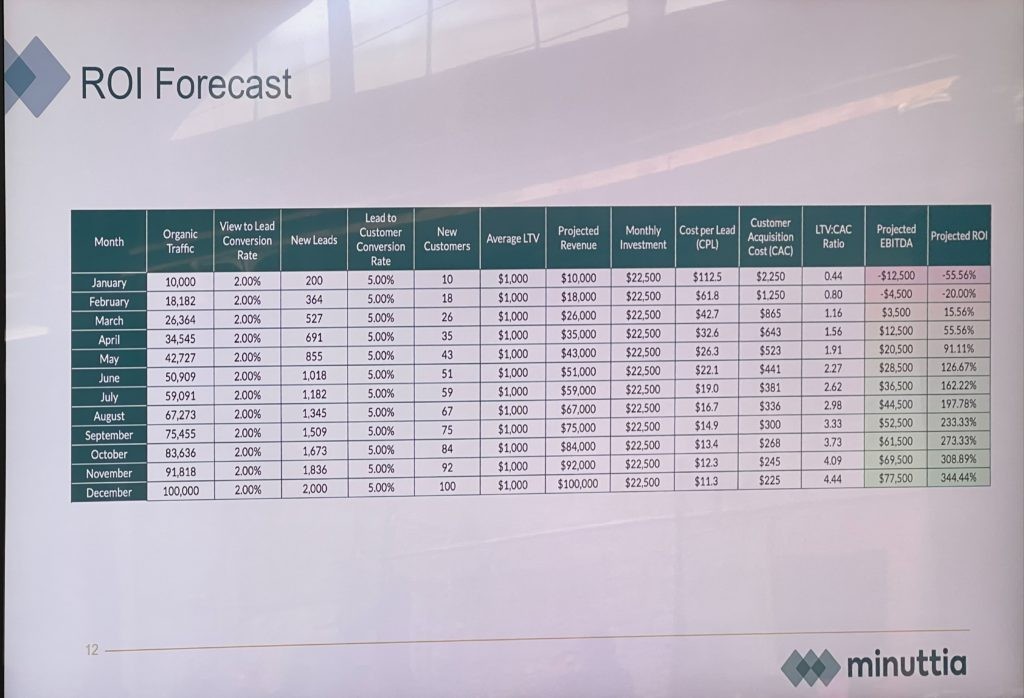
@timsoulo from ahrefs (Bootstrapped to 100M ARR with a team of 100) delivered an inspiring talk on calculating the ROI of your content marketing.
In short, it’s incalculable.
The costs involved in creating content can be easily calculated by dividing the monthly salaries of every person involved / monthly blog output.
What is difficult to extract is the value created by such content.
As you see here, we can observe and calculate just the tip of the iceberg as a direct investment return by considering the leads, conversions and sales.
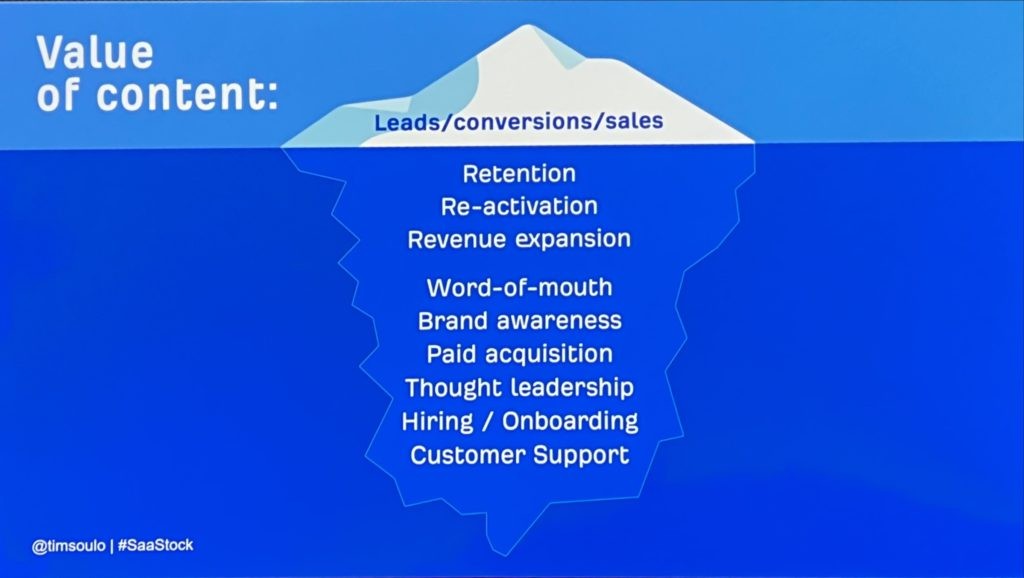
But what about the retention, reactivation, the revenue expansion the content will create?
If we consider word of mouth (I’ve been sharing with fellow entrepreneurs ahrefs blog posts and stories way ahead of purchasing their subscription), brand awareness, paid acquisition, and even customer support, the benefits are incalculable.
This is their recipe for every content idea.
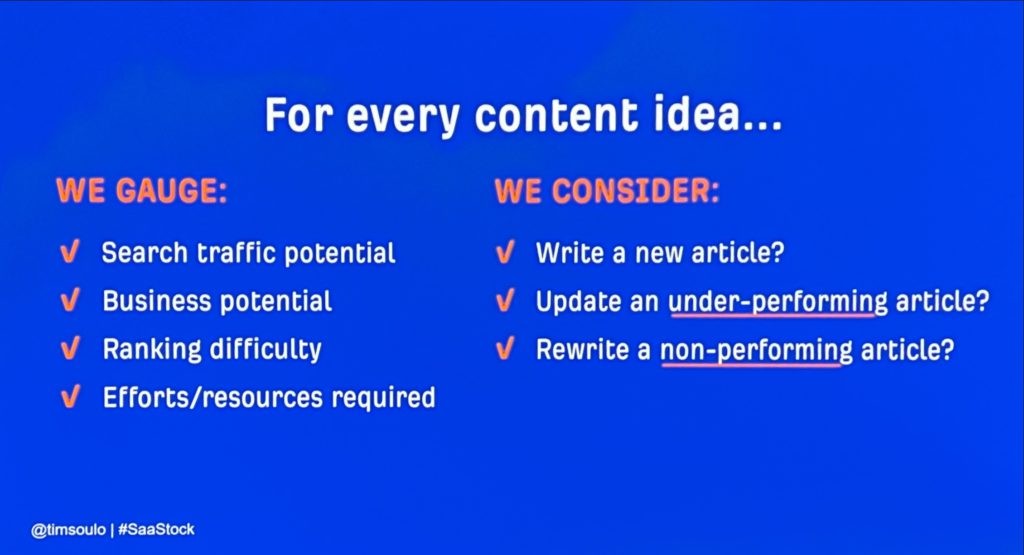
As a bootstrap company, we have loved to hear more about bootstrapped stories, and the one from Expandi.io was impressive.
They also leveraged content once they found product market fit and had money by hiring Quoleady.
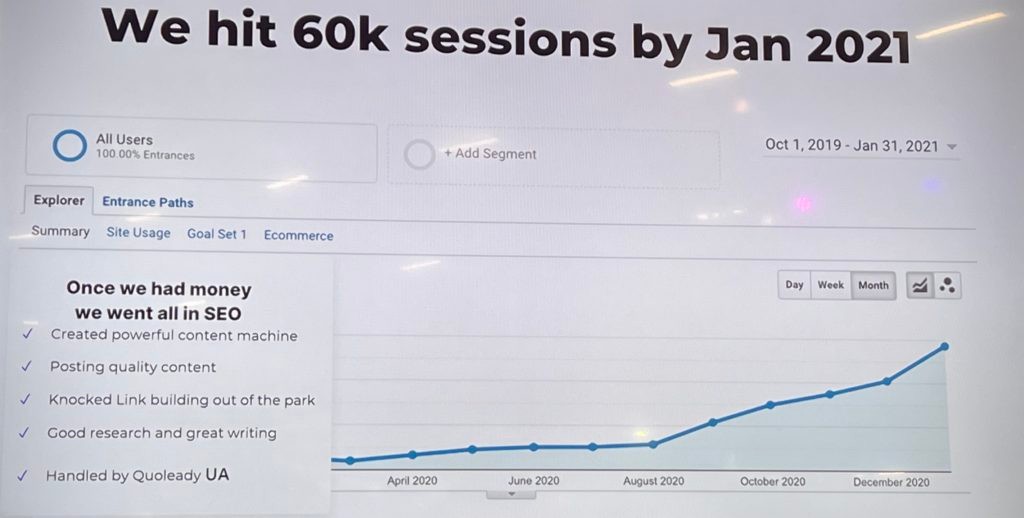
Content marketing is today one of the best customer acquisition channels for the money invested. The more consistent you are, the better results you will get.
PLG is key to low CAC
Product-led growth is the new recipe for SaaS success and has been heavily covered during SaaStock talks.
Some Product-led benefits:
- Empower the end-users
- Grow faster at scale
- Reduce CAC/Customer Service cost
- Build a better product
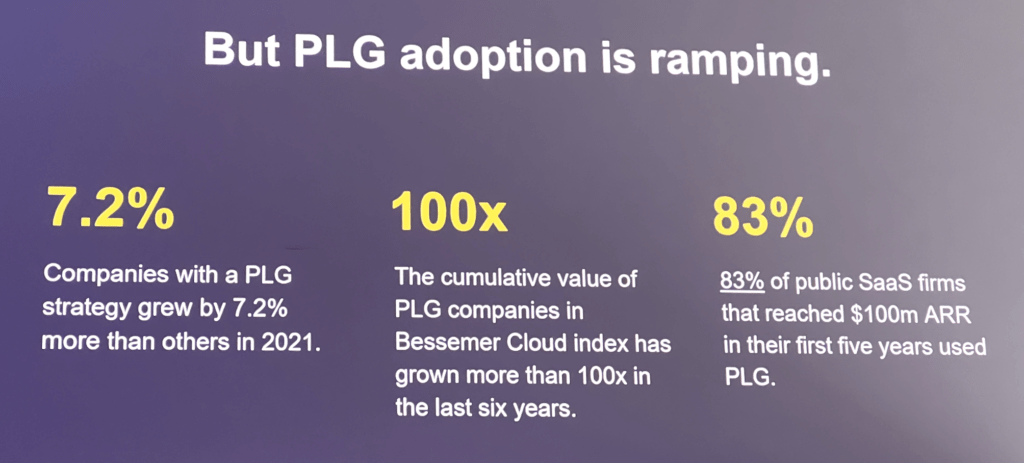
@christianbowens and @andjdavies from Paddle shared some figures about PLG adoption. In fact, companies with a PLG approach grew by 7.2% more than others. 83% of public SaaS firms that reached $100M ARR in the first five years used PLG.
Companies adopt a more inclined PLG approach because of the rising cost of CAC due to higher competition and increasing paid advertising costs (100% CPM YoY).
So you need to get smart and create the product in a way that brings growth itself. But how?
Kyle Poyar from OpenView has shared great insights on PLG Companies.
First of all, start with an organic search.
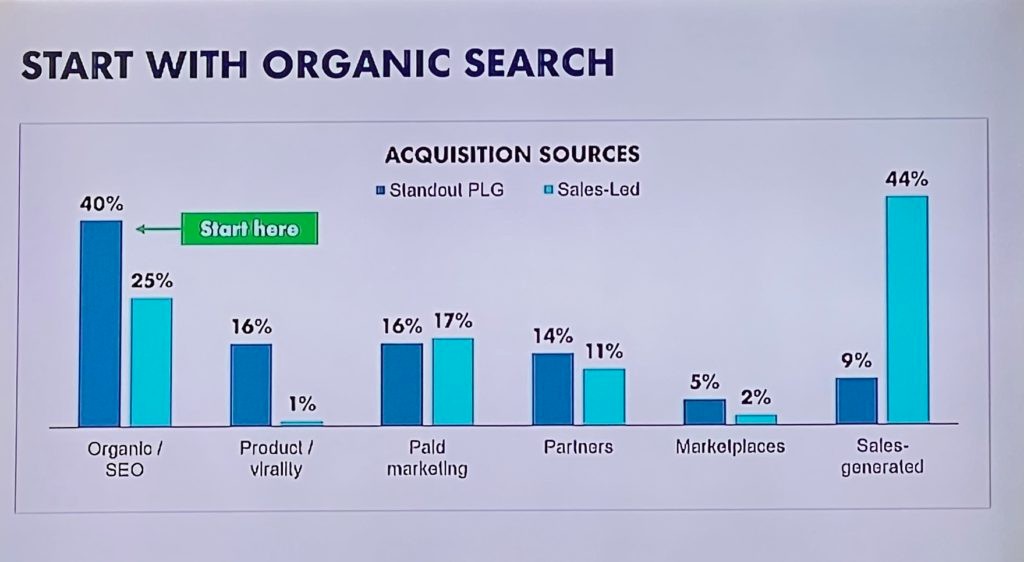
PLG companies are using Organic acquisition sources to let their prospect find them.
Focus your marketing on user pain, not buyer pain, as Grammarly did with this example.
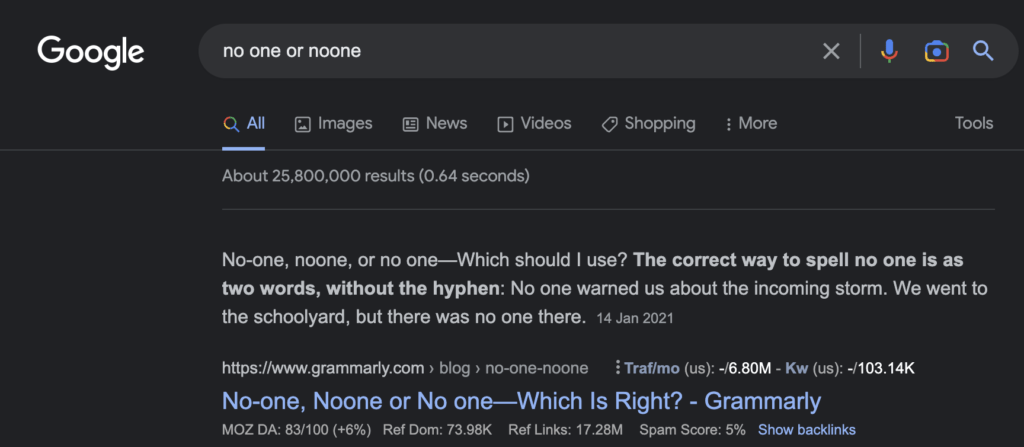
Communities
Also, creating a community around your topic is a great strategy for acquiring more customers, and this was one of the most performing strategies of Webflow.
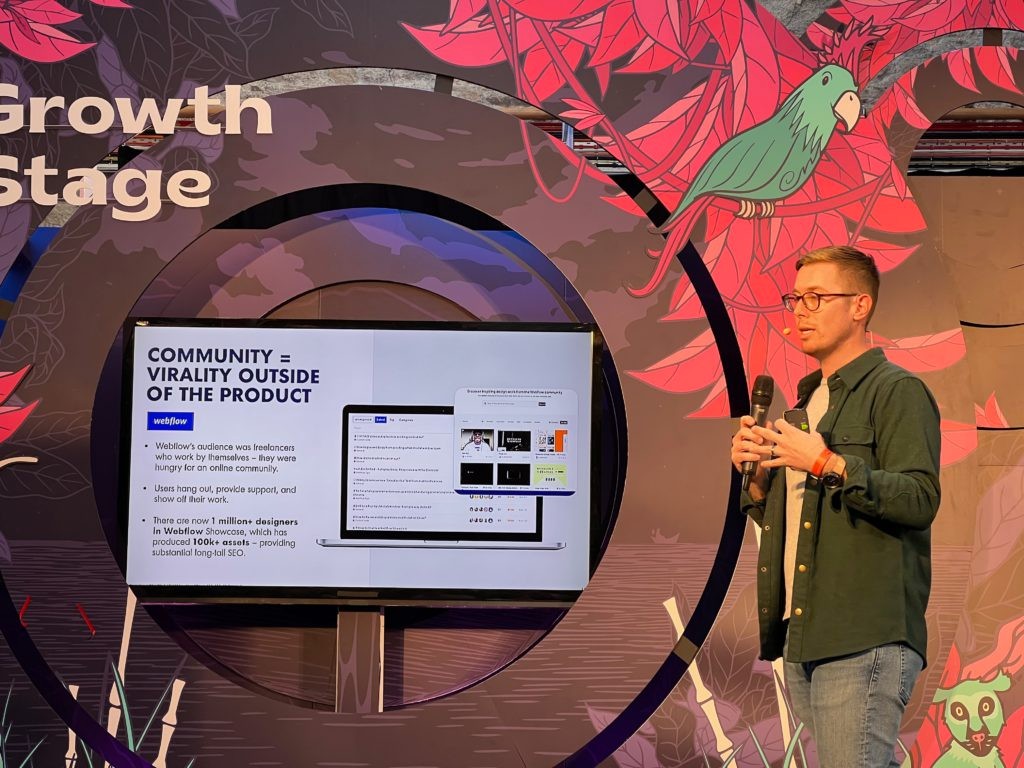
You can leverage existing communities to become a trusted voice where your users hang out (Facebook Groups, Reddit, Twitter, Quora).
You can use parasite marketing to put your product in front of more customers. E.g. Shopify’s Marketplace, Slack’s App Directory, Google’s Chrome Extension Web Store.
Connect users with their peers: Play the connector role for a specific function or industry. E.g. productmakers.com
Partner with power users to showcase and amplify their success.
Figma community, Notion’s template gallery, Miro’s Miroverse template gallery.
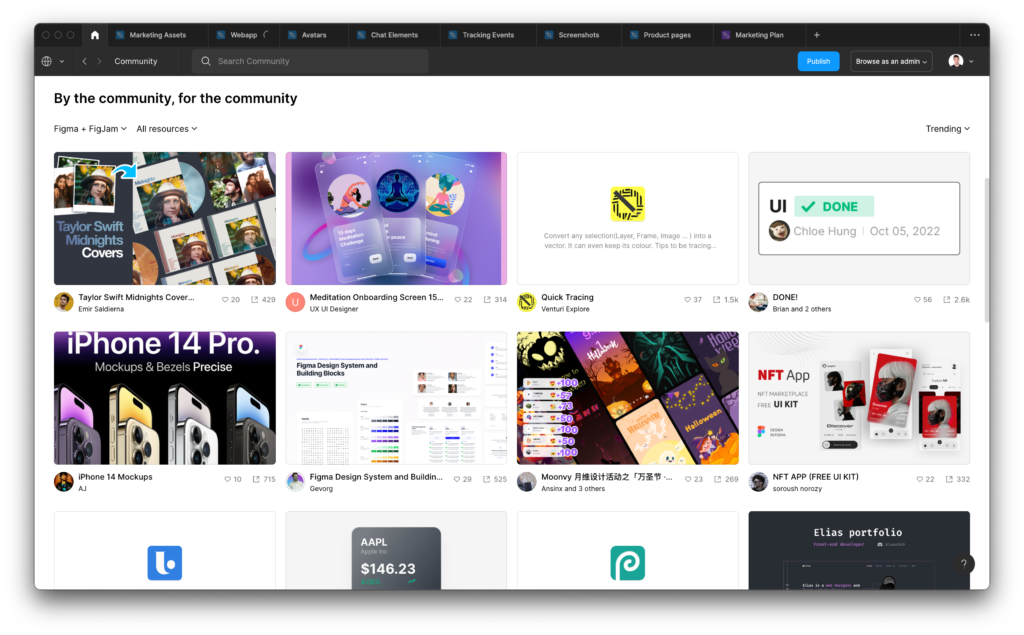
Build a content community by producing high-value content, tutorials, and educational material for target users. E.g. DigitalOcean’s community.
Make it Easy to Get Started
Nowadays, people love to self-serve and try software. Give them a way to get to the WoW moment as fast as possible.
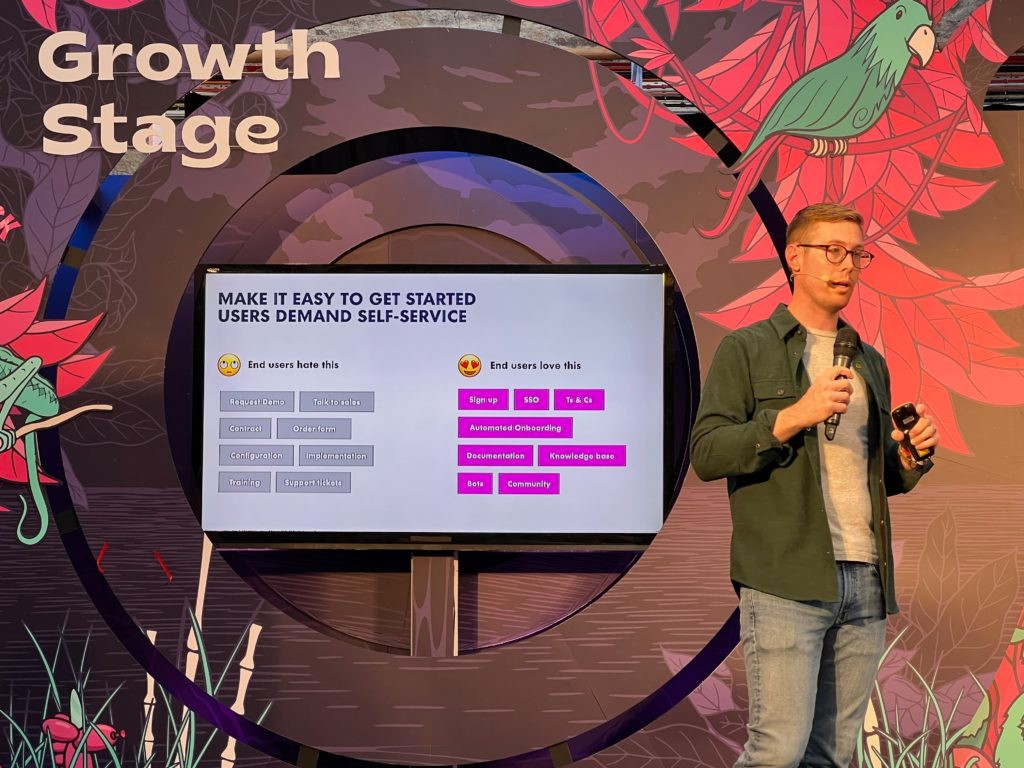
People hate to:
- Request a demo
- Talk to sales
- Order forms
- Open support tickets
End users instead love to:
- Signup
- Experience an automated onboarding
- Read the documentation on a knowledge base
- Talk on a Live chat with customer support if anything arises
Activation should be fast, within 1 week of signing up for the product. Activation rates of 20/40% are standard.
Onboarding
@esbenfj, Co-Founder at Userflow shared a few great tips on how to onboard users effectively that brought them to bootstrap to millions in ARR by using PLG.
Create an onboarding that Drives to Aha
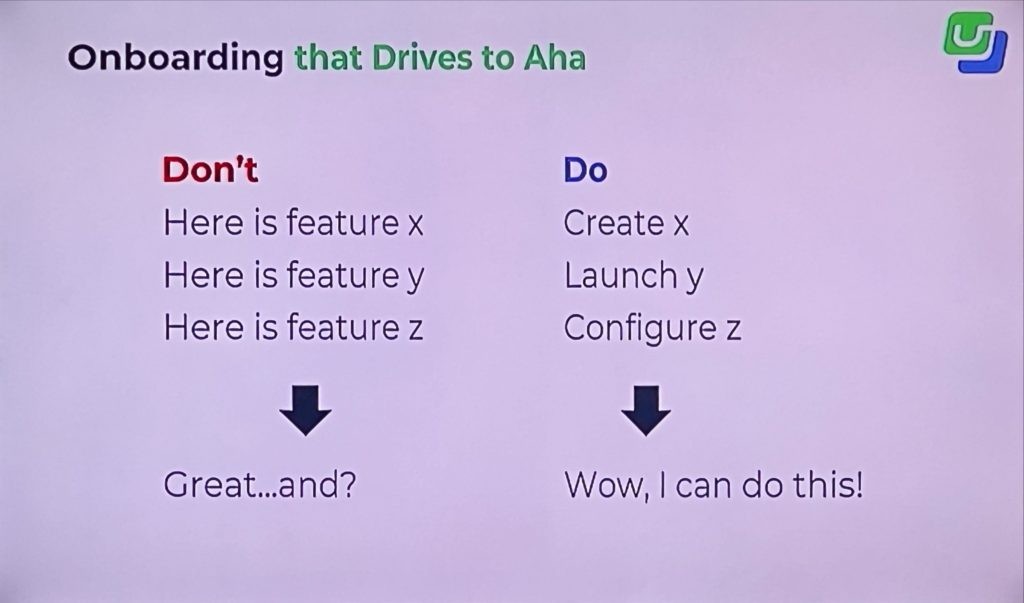
Remove unnecessary Friction
Their success was mainly attributed to the simplicity of building user flows without installing the snippet.
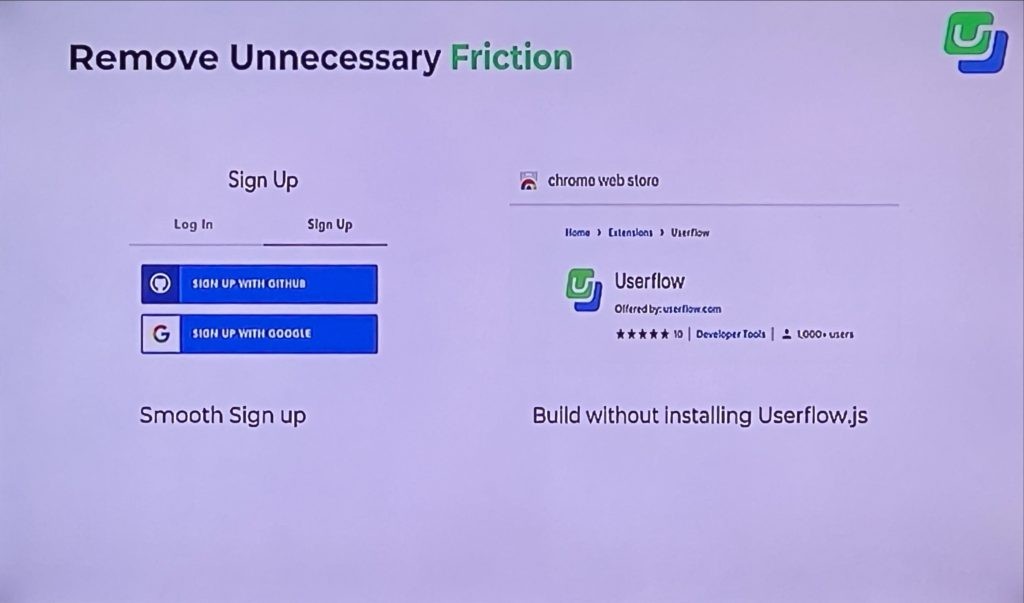
Freemium or Free trial?
The battle between freemium and free trial is always there; the short answer is you must experiment.
Here Kyle shared some figures on freemium and free trial conversion rates you can expect from your SaaS.
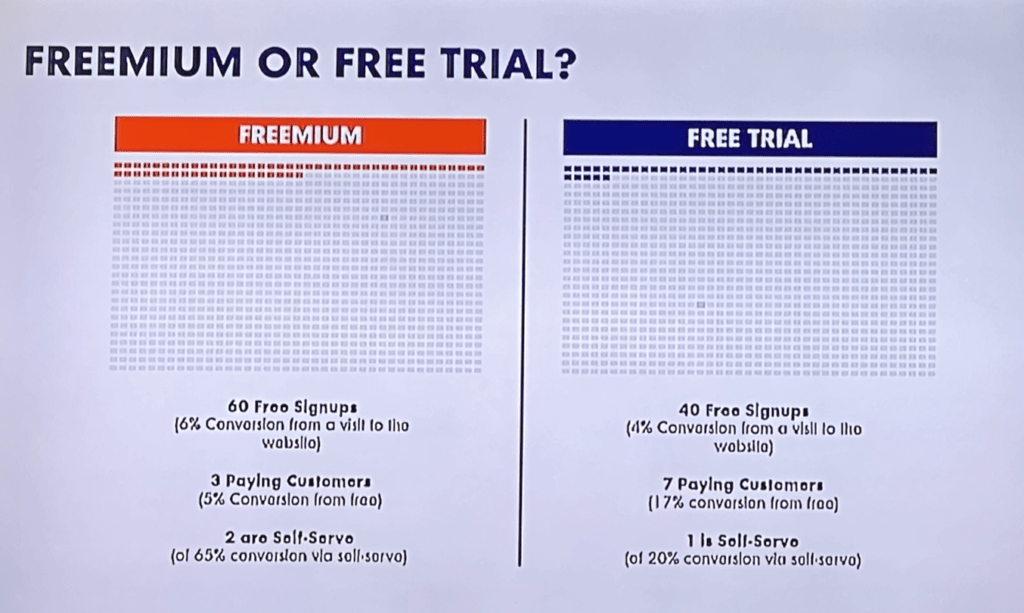
If you offer a freemium model, expect a 6% conversion from a visit to the website into signups. 5% convert into customers, and 65% convert via self-serve. Out of 1000 visits, you got 3 paying customers.
Free trial, of course, has higher friction with a lower conversion rate from visits to signup with an average of 4% but a higher conversion of 17% into paying customers, of which 20% is self-serve. Out of 1000 visits, you got 7 paying customers.
He also suggested why don’t you try both?
Offering a reverse trial where your customers can experience all the features for 14 days, and then if they are not ready to purchase, they can downgrade and benefit from free tools.
This way, the free users will have a feature gate like this.
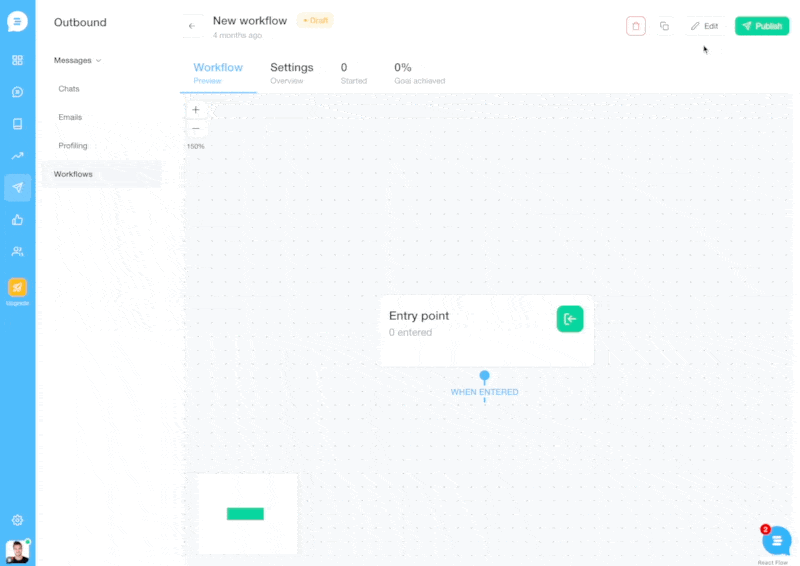
@esbenfj, Co-Founder & Chief Growth Officer at Userflow, suggests offering the free trial as the Primary CTA and “view a Demo” as secondary.
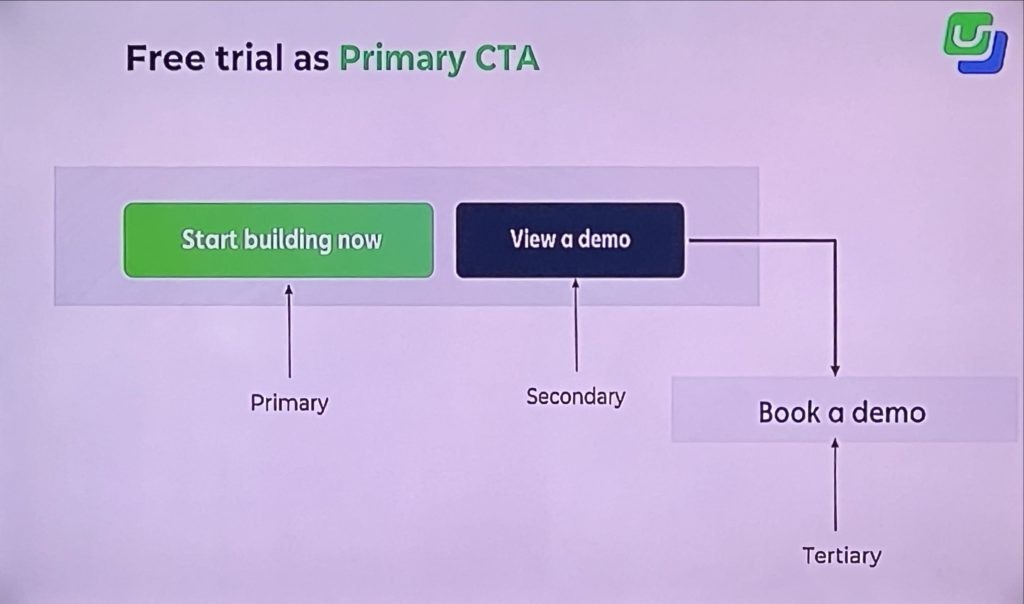
Churn, Churn, Churn, Churn…
@Patticus from ProfitWell delivered a speech with a single word for 20 minutes: Churn. No kidding, check this out.
Here are some ideas on how to reduce churn and increase ARPU.
Cancellation flows reduce churn by up to 25%.
During the cancellation process, ask for more information this:
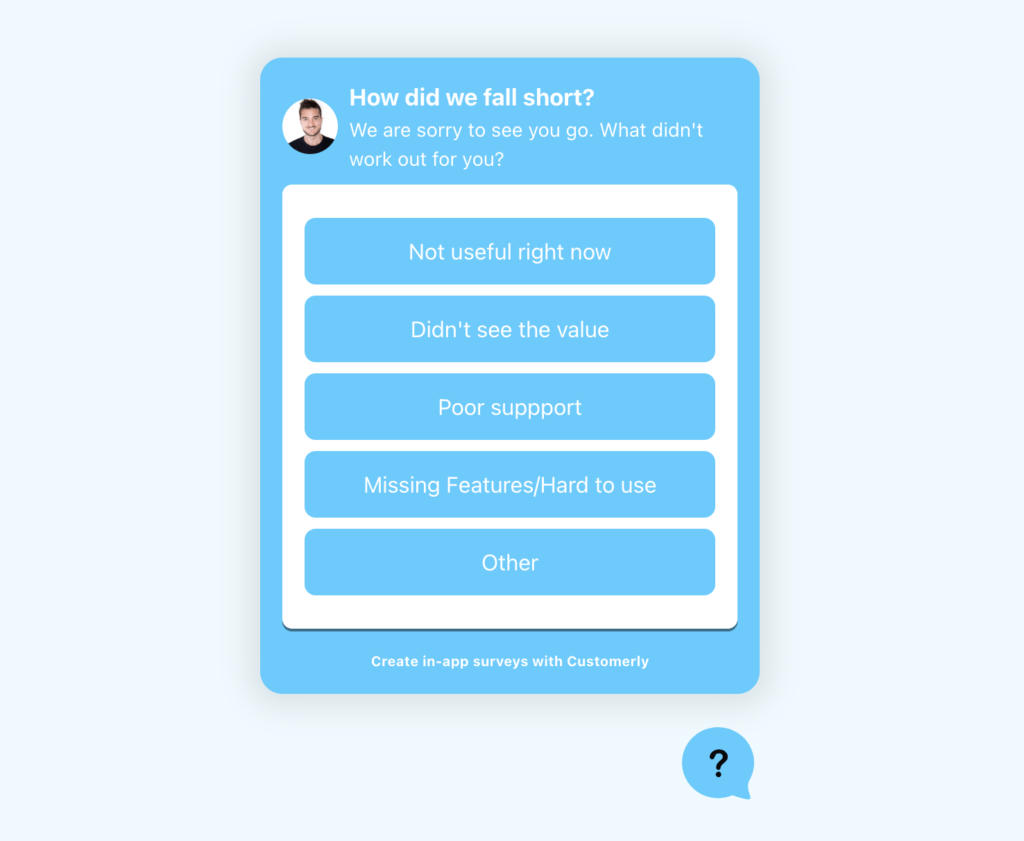
This second question is so effective cause is going to lets the users focus on the good things and value they got from your service.
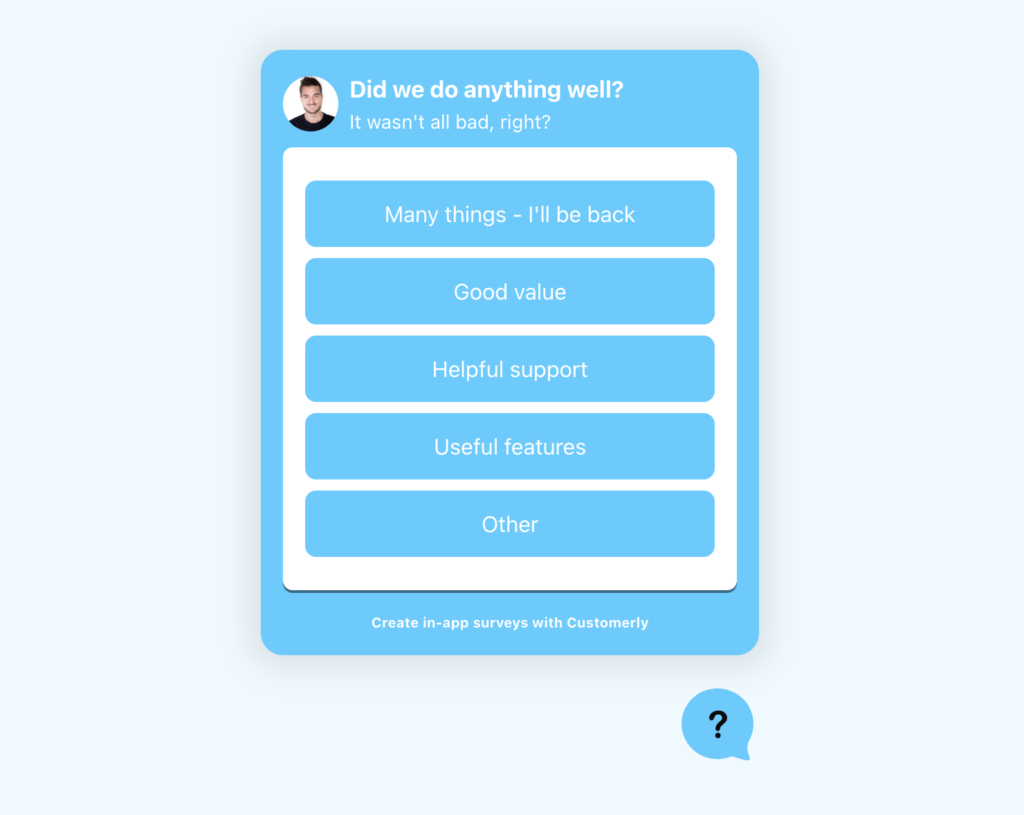
These are a few messages you can use today to reply to your churning users.
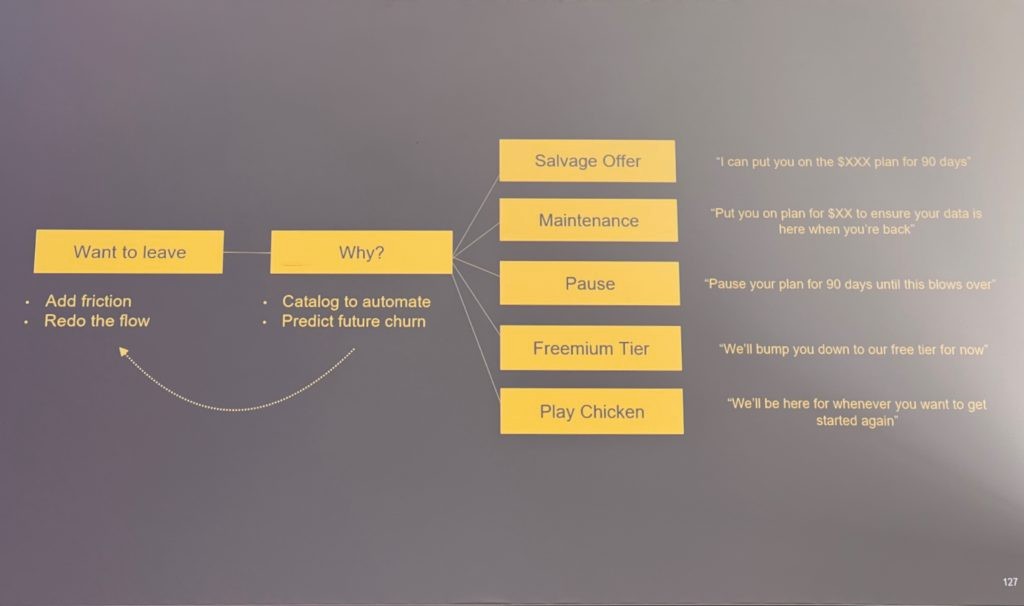
Switch to annual strategy
Quarterly and Annual customers have 100-300% higher LTV.
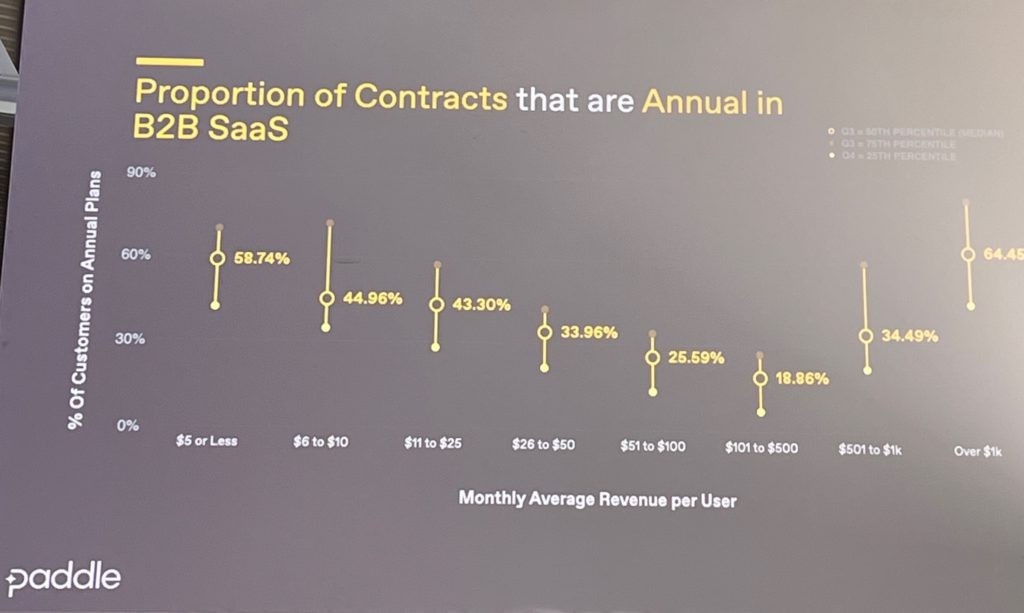
Instead of asking to get an annual plan as soon as they sign up for your product, go to your customers between 2-10 months every 45 days with an email that looks like this…
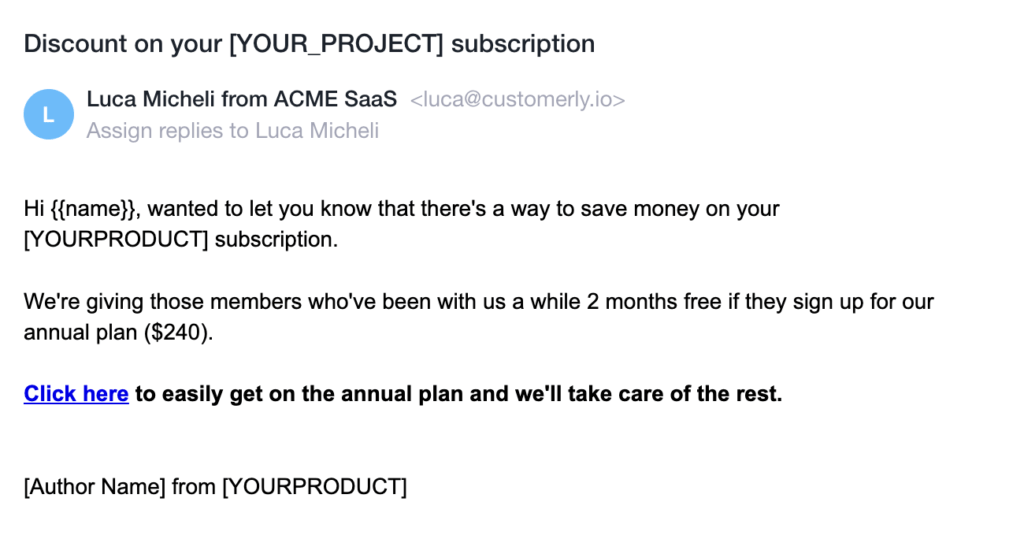
Plain text emails have a +50% engagement rate.
Don’t make your users log in to update their payment information.
More products to cross-sell. Premium versions to upsell.
The fastest growing SaaS companies have 20% or more of their new revenue each month coming from their existing customers spending more.
Think priority customer support, analytics, a special integration, etc.
Customers with add-ons have 18-54% higher LTV.
An easy exercise to find add-ons: Find features used by less than 40% of your base or segment.
Here’s a video on how to create customer segment based on your SaaS usage
Pricing
@andjdavies from Paddle shared some insights about pricing optimization.
Localization matters. Your SaaS has a different value based on the country you are selling.
SaaS that offers 2 different currencies are growing 12.7% faster, 25% faster when supporting 25+ currencies.
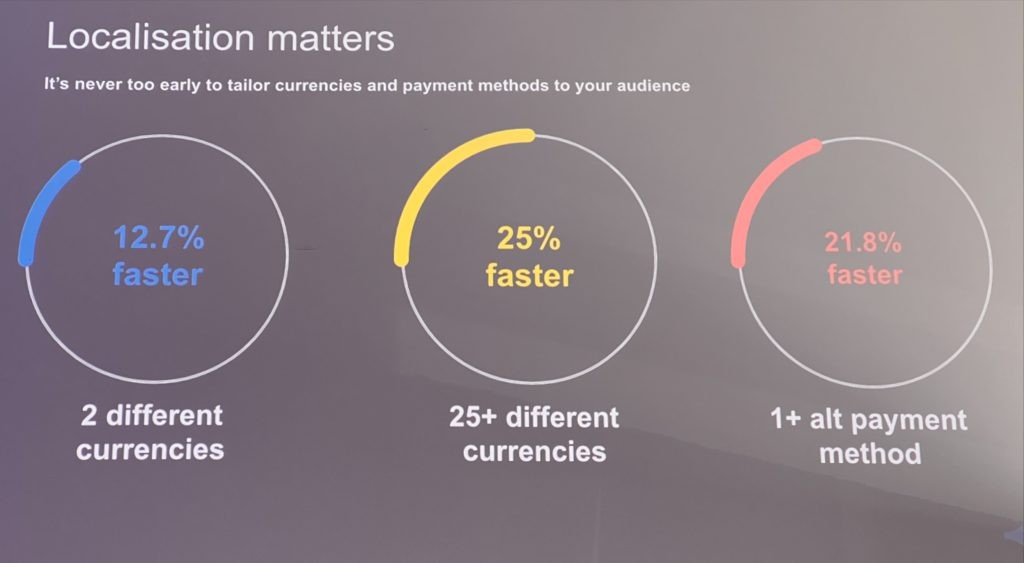
Change your SaaS prices more often. More Price Changes Correlate to Higher ARPU.
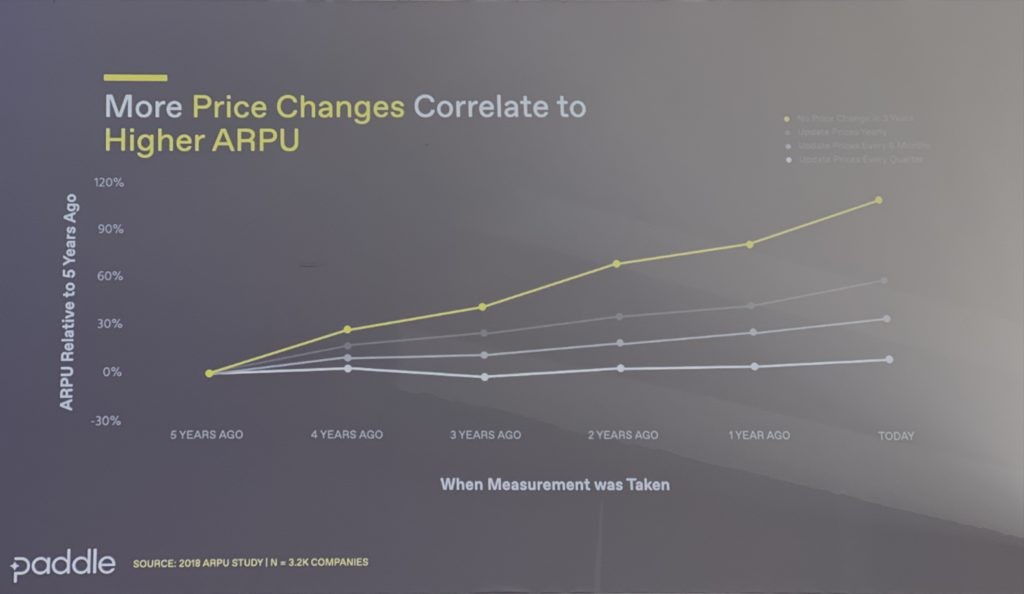
How to beat the competition
@SaraMcArcher from ChartMogul shared some key learnings from beating the competition with Baremetrics.
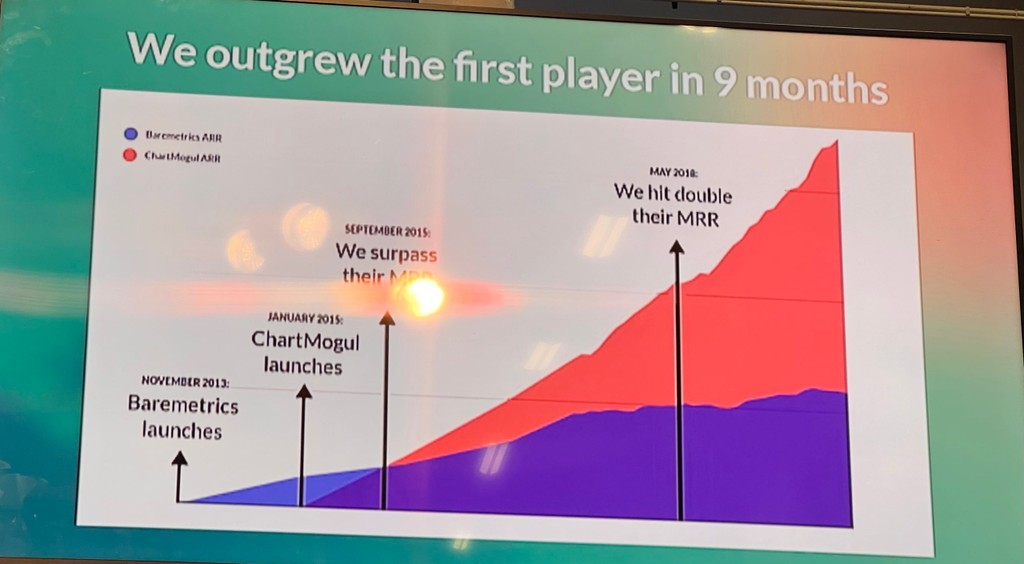
How?
They were the first to gather subscription analytics from different providers like Braintree, Recurly, Chargify, and Stripe.
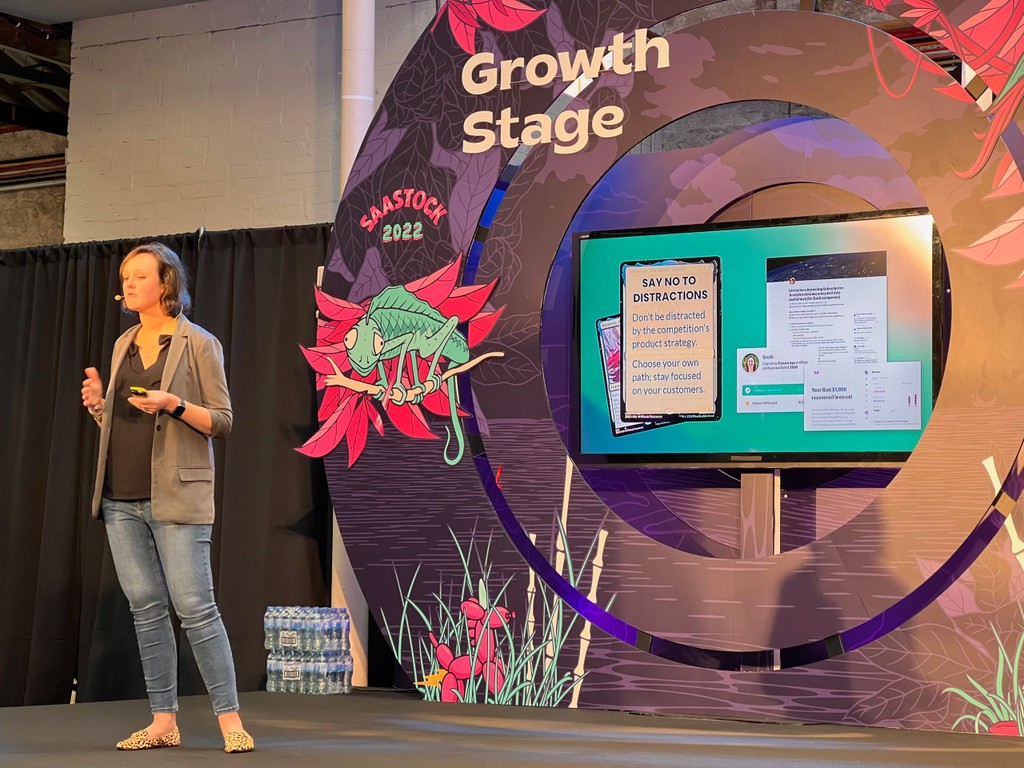
Sara suggests saying no to distractions: Don’t be distracted by the competition’s product strategy.
Choose your own path; stay focused on your customers.
Don’t let the other players dictate the price.
Experiment to find the right product pricing fit.
Content: Drive massive organic awareness. Own your category by building an authoritative and memorable brand.
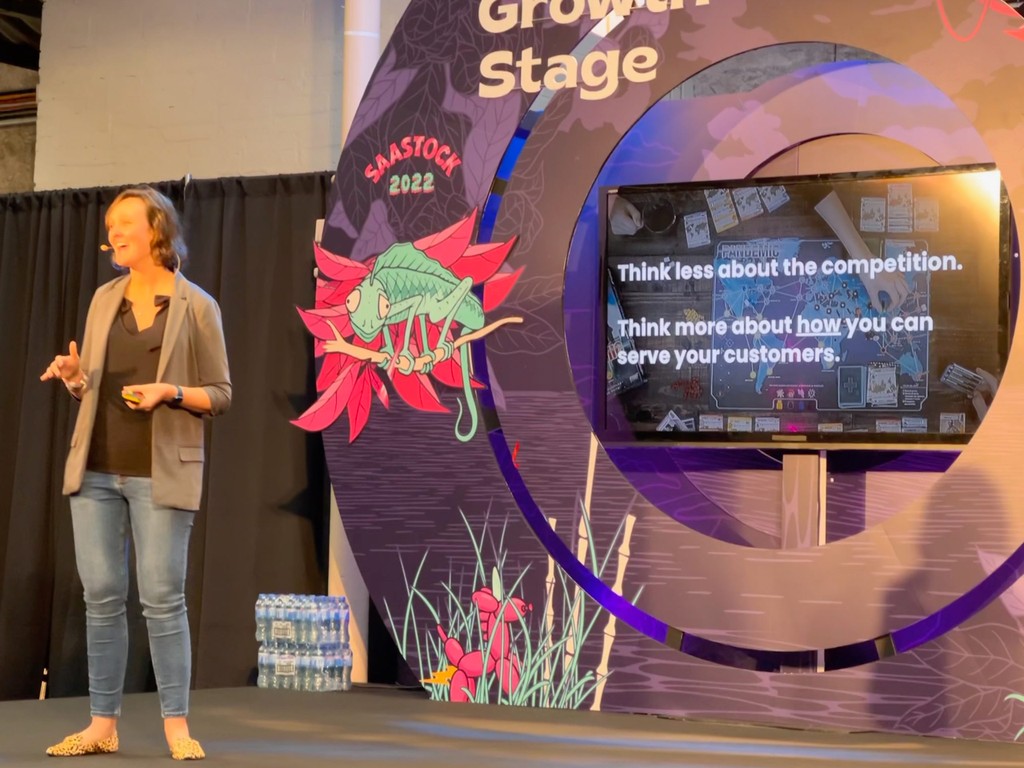
Think less about the competition. Think more about how you can serve your customers.
As an Intercom competitor, I couldn’t agree more with this statement.
Successful Bootstrappers
One of the most inspiring bootstrap SaaS for me is ahrefs and I’m glad I met Tim Soulo after the talk. They bootstrapped to $100M with a team of 100 in a crowded space.
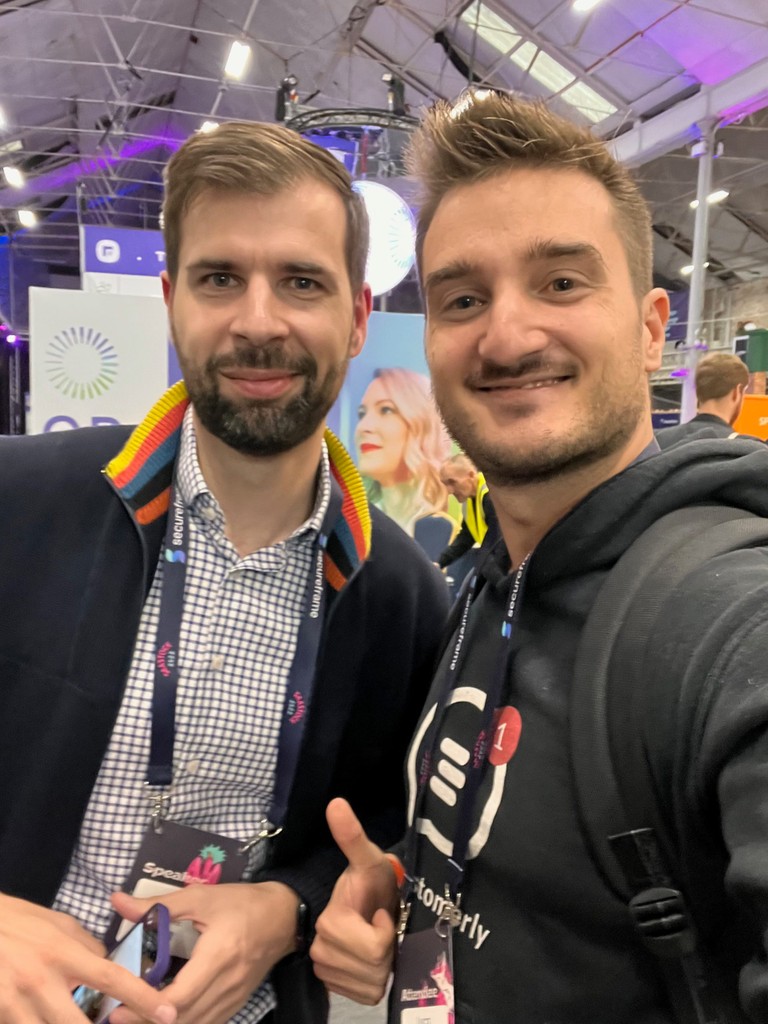
They have used an incredible content machine to get there, but they share everything on their blog and Youtube channel.
Nathan Latka @ Founderpath (A cool way to get capital by turning your monthly subscriptions into upfront cash) brought some of the best bootstrapped SaaS examples to the stage.
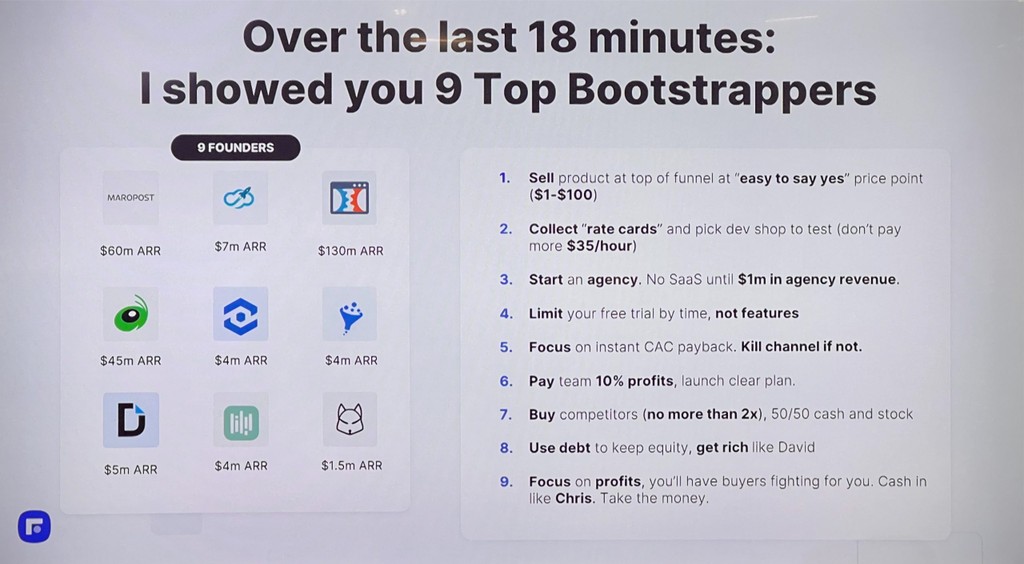
Nathan suggests to:
- Sell product at the top of the funnel at “easy to say yes” price point
($1-$100) - Collect “rate cards” and pick a dev shop to test (don’t pay more $35/hour)
- Start an agency. No SaaS until $1m in agency revenue.
- Limit your free trial by time, not features.
- Focus on instant CAC payback. Kill channel if not.
- Pay team 10% profits, launch clear plan.
- Buy competitors (no more than 2x), 50/50 cash and stock
- Use debt to keep equity
- Focus on profits, and you’ll have buyers fighting for you. Take the money
Expandi.io was another successful bootstrapped story to $1M ARR with a few tips:
We reached out to our beta users with a special offer: If they get a yearly subscription (and pay upfront) they’ll get a discount, and we’ll help them with content to sequences.
We had 62 users accept this offer, translating to nearly 50k euros in subscriptions.
They have also used to make great influencers friends, and they started to support the product.
Conclusion
SaaStock was a refreshing event to tap into new findings and inspiring stories. Looking forward to hearing about your key learnings at SaaStock.
Overall most of the talk focused on PLG and Content marketing as the way to grow today.
Share this article with a friend who missed SaaStock and cannot get any recordings!
